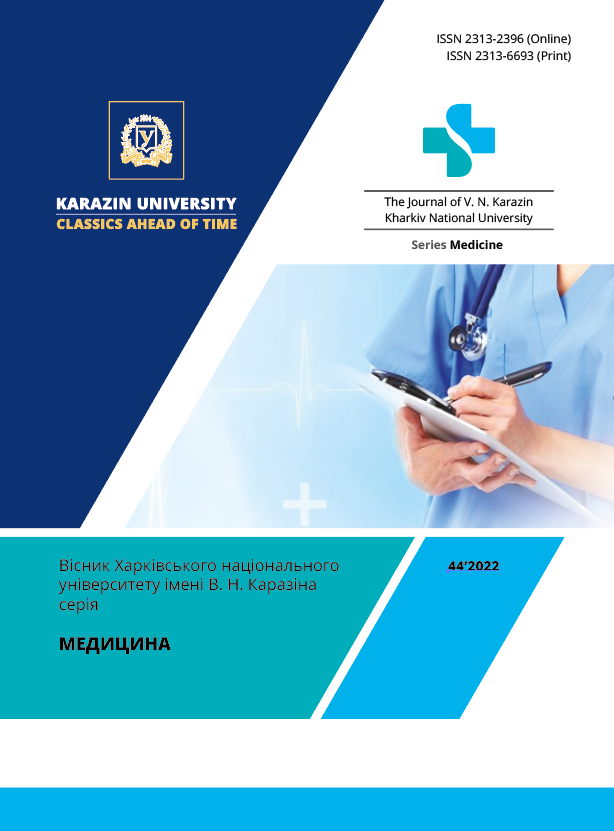Nose bleeding on the background of antithrombotic therapy: features of the clinical picture and stopping of bleeding
Abstract
Introduction. At present, an increase in the number of patients with pathology of the cardiovascular system in need of antithrombotic therapy is stated. Features of the clinical picture of nosebleeds against the background of antithrombotic therapy are little studied and there are isolated reports on the effectiveness of various methods of stopping bleeding in this category of patients. Objective. Study of the features of the clinical picture and improvement of methods for stopping nosebleeds during antithrombotic therapy. Materials and methods. A study was made of the features of the clinical picture and the effectiveness of various methods of stopping bleeding in 156 patients with epistaxis, which developed against the background of antithrombotic therapy. All patients were divided into two groups: the main group (104 patients), in which nasal bleeding was stopped by a combined method, including the use of a two-chamber hydrotampon of our own design in combination with Nozochem gel and thermal exposure, and a control group (52 patients) where classical gauze tamponade of the nasal cavity was used. Results. Against the background of antithrombotic therapy, bleeding from the anterior parts of the nasal cavity was noted in 144 (92.3 %) patients. Bleeding from the posterior parts of the nasal cavity was diagnosed in 12 (7.7 %) patients. In the majority of patients (80.1 %), epistaxis had a diapedetic character of varying intensity. Against the background of antiplatelet therapy, epistaxis had a less intense character and a tendency to recurrence than in patients receiving anticoagulant therapy. Among anticoagulant therapy, a more intense and recurrent nature of epistaxis was noted in patients treated with warfarin. The method proposed by us showed its effectiveness in stopping nosebleeds in 100 (96.1 %) patients of the main group. In the control group of patients, gauze tamponade of the nasal cavity provided stable hemostasis in 44 (84.6 %) patients. Conclusions. Nosebleeds during antithrombotic therapy most often occur in the anterior parts of the nasal cavity and are predominantly diapedetic in nature. Against the background of antiplatelet therapy, nosebleeds are less intense and prone to recurrence than in patients undergoing anticoagulant therapy. The combined method proposed by us for stopping nosebleeds is more effective and safe in comparison with traditional gauze tamponade and can be recommended as a choice for stopping nosebleeds during antithrombotic therapy.
Downloads
References
Heit JA, Spencer FA, White RH. The epidemiology of venous thromboembolism. J. Thromb. Thrombolysis. 2016; 41 (1): 3–14. DOI: https://doi:10.1007/s11239-015-1311-6
Buchberger AMS, Baumann A, Johnson F et al. The role of oral anticoagulants in epistaxis. Eur. Arch. Otorhinolaryngol. 2018; 275 (8): 2035–2043. DOI: https://doi:10.1007/s00405-018-5043-z
Sauter TC, Hegazy K, Hautz WE et al. Epistaxis in anticoagulated patients: Fewer hospital admissions and shorter hospital stays on rivaroxaban compared to phenprocoumon. Clin. Otolaryngol. 2018; 43 (1): 103–108. DOI: https://doi:10.1111/coa.12904
Stadler RR, Kindler R, Holzmann D et al. The long-term fate of epistaxis patients with exposure
to antithrombotic medication. Eur. Arch. Otorhinolaryngol. 2016; 273: 2561–2567. DOI: https://doi:10.1007/s00405-016-3913-9
Yaniv D, Zavdy O, Sapir E et al. The Impact of Traditional Anticoagulants, Novel Anticoagulants,
and Antiplatelets on Epistaxis. The Laryngoscope. 2021; 131 (9): 1946–1951. DOI: https://doi:10.1002/lary.29417
Bola S, Marsh R, Braggins S et al. Does the continuation of warfarin change management
outcomes in epistaxis patients? J. Laryngol. Otol. 2016; 130 (3): 256–260. DOI: https://doi:10.1017/S0022215115003424
Smith J, Hanson J, Chowdhury R et al. Community-based management of epistaxis: Who bloody knows? Can. Pharm. J. (Ott). 2019; 152 (3): 164–176. DOI: https://doi: 10.1177/1715163519840380
Glikson E, Chavkin U, Madgar O et al. Epistaxis in the setting of antithrombotic therapy: A comparison between factor Xa inhibitors, warfarin, and antiplatelet agents. Laryngoscope. 2019; 129 (1): 119–123. DOI: https://doi:10.1002/lary.27400
Tunkel DE, Anne S, Payne SC et al. Clinical Practice Guideline: Nosebleed (Epistaxis). Otolaryngol. Head Neck Surg. 2020; 162 (1): 1–38. DOI: https://doi:10.1177/0194599819890327
The Journal of V. N. Karazin Kharkiv National University, series Medicine has following copyright terms:
- Authors retain copyright and grant the journal right of first publication with the work simultaneously licensed under a Creative Commons Attribution License that allows others to share the work with an acknowledgement of the work’s authorship and initial publication in this journal.
- Authors are able to enter into separate, additional contractual arrangements for the non-exclusive distribution of the journal’s published version of the work, with an acknowledgement of its initial publication in this journal.
- Authors are permitted and encouraged to post their work online prior to and during the submission process, as it can lead to productive exchanges, as well as earlier and greater citation of published work.




